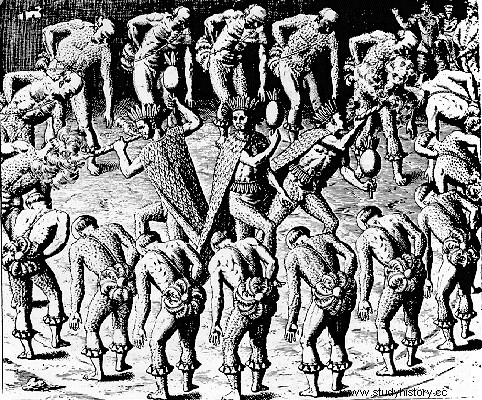
Among the indigenous tribes that lived in Brazil at the time of the beginning of Portuguese colonization, in the 16th century, the Tupinambas became widely known for a peculiar characteristic:anthropophagy, that is, the act of eating human flesh, also called cannibalism. It is true that the Tupinambás were not the only ones to practice this practice, but mainly due to the reports of some European travelers who witnessed the rituals of cannibalism of this tribe, their fame spread throughout the world.
The main written report about the cannibalism of the Tupinambás is authored by the German adventurer Hans Staden (1525-1579) and is recorded in the work Duas Viagens para o Brasil , published in 1557. This account circulated widely among literate circles in Europe for several decades, which contributed to the composition of an exotic imaginary of the so-called “New World”.
Another European who dedicated himself to reflecting on the cannibalism of the Brazilian Indians was the French philosopher Michel de Montaigne (1533-1592), inventor of the genre of writing called essay . Montaigne wrote the essay entitled “Dos Cannibals” to think about the form of organization of European civilization of his time (16th century) in contrast to the primitive tribe of the Tupinambás. Not to mention that both Montaigne and several crowds of people from the 16th century had the opportunity to see Tupinambá Indians in cities like Lisbon and Paris. They had been captured in Brazil and taken there in order to add an “exotic show” to the court of European monarchs.
The practice of cannibalism among Brazilian indigenous tribes is interpreted by anthropologists and historians from various angles. Firstly, it should be noted that Tupinambá cannibalism is characterized as “exocannibalism”, that is, this tribe did not devour members of its own community, but looked to other rival tribes for its “food”. Usually cannibalized men were warriors captured in battle. The bodies of these rivals were eaten in ceremonies with the presence of dance and other ritualistic elements. Cannibalism, in most cases, had some mythical foundation that legitimized it, such as the need to scare away the violence of the group, the community, through the sacrifice of members outside it.
In the 1920s, it is worth adding that the poet, polemicist and philosopher Oswald de Andrade , one of the organizers of the 1922 Modern Art Week, published the “Manifesto Antropófago”, one of the basic texts of Brazilian artistic Modernism, in which he evoked the idea of Brazilian cannibalistic Indians, giving it an aesthetic sense that served as a mark of the Brazilian culture's ability to absorb other cultures and traditions and imprint its own stamp on them.
